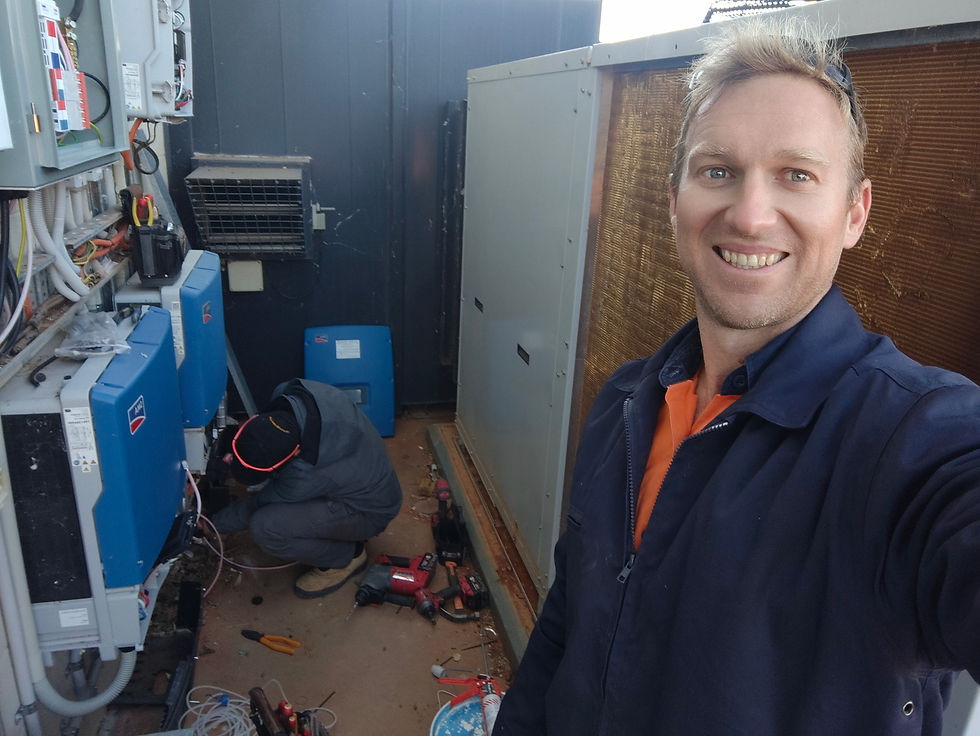AS/NZS 4509 Part 1: An Introduction to Stand Alone Power Systems and Off-Grid Solar Energy
- JVC Energy Team

- Feb 24
- 4 min read
Updated: Mar 8
AS/NZS 4509 is the Australian Standard that outlines the essential guidelines for designing, installing, and maintaining stand-alone power systems (SAPS). This standard plays a pivotal role in ensuring that off-grid solar applications operate safely, efficiently, and reliably.
For those considering an off-grid solar and battery system, understanding AS/NZS 4509 is vital. Off-grid systems function independently from the national electricity grid, making self-sufficiency and energy security key priorities. AS/NZS 4509 provides a framework that ensures these systems meet stringent performance and safety requirements, offering peace of mind and optimal performance.
At JVC Energy, we specialize in off-grid energy solutions that adhere to AS/NZS 4509, ensuring our clients receive robust, compliant systems tailored to handle Australia’s diverse climates and energy demands.
Understanding AS/NZS4509
The standard contributes to user safety by outlining requirements for system design, installation, and performance. It ensures these systems work effectively and meet environmental standards. For example, AS/NZS4509 encourages the use of high-efficiency photovoltaic panels that can convert at least 15-20% of solar energy into electricity, which is a key factor for remote areas with limited sunlight.
Purpose of the Standard
AS/NZS4509 is designed to enhance the safety and reliability of stand-alone power systems. These systems typically integrate various technologies, including solar panels, batteries, and inverters. The standard lays out detailed guidelines for properly combining these components.
Key points include:
Electrical Safety: Adhering to electrical safety regulations helps reduce risks of fire or electric shock.
System Efficiency: By promoting best practices, the standard ensures that these systems perform optimally, which can lead to a 10-15% reduction in energy loss during operation.
Types of Stand-Alone Power Systems
AS/NZS4509 applies to various stand-alone power systems, catering to different energy needs and geographical locations.
Solar-Only Systems
Solar-only systems harness solar energy exclusively, utilizing photovoltaic panels. They are especially effective in remote areas with abundant sunlight. For instance, a solar-only system installed in the Outback can produce 10-15 kilowatts of power daily, sufficient for small communities or remote mining sites.

Hybrid Systems
Hybrid systems combine multiple energy sources, like solar and wind. This flexibility is essential in regions where weather can be unpredictable. For example, a hybrid system can ensure continued energy supply in areas where solar energy fluctuates, potentially boosting energy reliability by up to 20%.
Battery Storage
Battery storage systems capture surplus energy for use when production is low. These systems can store energy from solar panels, which can be used during night hours. For instance, with a well-designed battery storage system, users can access up to 80% of the energy generated during the day for nighttime use.
Key Components and Their Standards
AS/NZS4509 details essential components required for effective stand-alone power systems. Grasping these components and their standards is vital for successful implementation.
Photovoltaic Panels
Photovoltaic panels convert sunlight into electricity. Their efficiency and durability are crucial for long-term operation. Panels that can last 25 years while maintaining at least 80% efficiency after 20 years are covered in the standard.
Inverters
Inverters play a pivotal role by converting direct current (DC) from solar panels into alternating current (AC), which is what most homes and businesses use. AS/NZS4509 specifies performance benchmarks rating inverters for reduced energy losses to less than 5%, maximizing energy use.
Batteries
Batteries store energy generated during peak production times for later use. The standard’s guidelines help in selecting batteries based on longevity (with a cycle life of 3000 or more), capacity, and safety.
Regulatory and Environmental Considerations
A significant aspect of AS/NZS4509 is its commitment to environmental sustainability. Stand-alone power systems frequently operate in sensitive areas. Thus, the standard mandates eco-friendly practices that limit ecological disruption. Compliance can help minimize the carbon footprint associated with energy generation by up to 30%.
The Benefits of AS/NZS4509 Compliance
Engaging with AS/NZS4509 goes beyond mere compliance; it offers various benefits, particularly for those in the stand-alone power system market.
Enhanced Safety: Compliance reduces electrical hazards, fostering user safety.
Improved Reliability: Systems that meet the standard typically show a reduction in downtime by 15%, ensuring consistent energy access.
Lower Maintenance Costs: By adhering to clear guidelines, systems are easier to maintain, potentially reducing repair costs by 20% or more over time.
Environmental Responsibility: Focus on sustainability allows operators to contribute positively to local conservation efforts.
Looking Ahead
As we embark on this enlightening eight-part journey through AS/NZS4509, we will explore each aspect in detail. This standard plays a crucial role in shaping the future of stand-alone power systems and off-grid solar energy.
In this introduction, we have uncovered the essence of AS/NZS4509, highlighting its importance in establishing a safer, more efficient, and environmentally conscious energy generation approach.
Stay tuned for the next installment, where we'll delve deeper into specific components of stand-alone power systems and their interactions under the AS/NZS4509 framework. The potential of off-grid energy is vast, and understanding these systems is integral to achieving a sustainable future.
By adopting the principles of AS/NZS4509, we take a significant step toward energy independence and environmental stewardship.




Comments